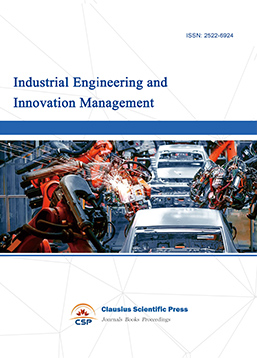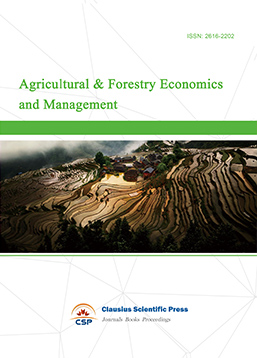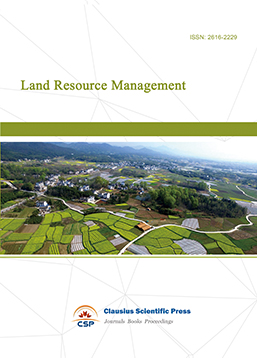Survey and the Current Status of Awareness of Hospice Care among Nursing Medical Students
DOI: 10.23977/socmhm.2024.050115 | Downloads: 25 | Views: 1477
Author(s)
Meichun Yang 1, Ruifeng Meng 2, Jiahui Long 3, Qijun Long 4, Edreck D. Estioko 5
Affiliation(s)
1 Philippine Christian University Center for International Education, Manila, 1004, Philippine
2 Affiliated Hospital of Youjiang Medical University for Nationalities, Baise, 533000, China
3 Medical College, Xinjiang University of Science & Technology, Korla, 841009, China
4 Youjiang Medical University for Nationalities, Baise, 533000, China
5 Philippine Heart Center, Quezon, 0850, Philippine
Corresponding Author
Qijun LongABSTRACT
With the development of the times, the medical model is shifting towards a "biological spiritual social" medical model. The new medical model suggests that diseases are a common phenomenon in social life, closely related to social and psychological factors. Therefore, diseases are seen as comprehensive symptoms that arise in the body after a combination of multiple factors. The transformation of this model has prompted people to reflect on traditional medicine and reflect on the true needs of life. In this context, soothing therapy and palliative care have emerged. After more than half a century of development, palliative medicine has formed a relatively complete system. Many countries have combined grassroots health services with rehabilitation nursing to form innovative rehabilitation nursing models, and these experiences have reference significance for people. This study aims to review and evaluate these achievements, and compare them with the situation in China, providing reference for the development of hospice care in China. The experimental results show that 35% of students believe they understand the psychological impact of illness, and only 5% of students believe they can provide good end-of-life care. There is a certain degree of insufficient awareness among nursing medical students.
KEYWORDS
Awareness of Hospice Care, Nursing Medical Students, Current Situation Investigation and Analysis, End-of-life CareCITE THIS PAPER
Meichun Yang, Ruifeng Meng, Jiahui Long, Qijun Long, Edreck D. Estioko, Survey and the Current Status of Awareness of Hospice Care among Nursing Medical Students. Social Medicine and Health Management (2024) Vol. 5: 97-105. DOI: http://dx.doi.org/10.23977/socmhm.2024.050115.
REFERENCES
[1] Liu J, Li J, Li X. Awareness of Hospice Care Among Community-Dwelling Elderly Participants. Research and Theory for Nursing Practice, 2023, 37(3): 386-400.
[2] Tobin J, Rogers A, Winterburn I. Hospice care access inequalities: a systematic review and narrative synthesis. BMJ supportive & palliative care, 2022, 12(2): 142-151.
[3] Cardenas V, Fennell G, Enguidanos S. Hispanics and hospice: A systematic literature review. American Journal of Hospice and Palliative Medicine®, 2023, 40(5): 552-573.
[4] Fan S Y, Lin W C. The relationships between self-efficacy, self-care ability, and burnout and compassion satisfaction among hospice staff in Taiwan. Supportive Care in Cancer, 2022, 30(6): 5491-5497.
[5] Teno J M, Ankuda C K, Keohane L. Pathway to hospice: how has place of care before hospice changed with the growth of hospice in the United States? Journal of palliative medicine, 2022, 25(11): 1661-1667.
[6] Khosla N. "It Seems Like a Bad Thing": US South Asian Youths' Perspectives About the Use of Hospice Care. American Journal of Hospice and Palliative Medicine®, 2024, 41(4): 383-390.
[7] Cloyes K G, Jones M, Gettens C. Providing home hospice care for LGBTQ+ patients and caregivers: Perceptions and opinions of hospice interdisciplinary care team providers. Palliative & Supportive Care, 2023, 21(1): 3-11.
[8] Back A, Grant M, Rotella J. Improving Public Messaging About Advance Care Planning, Palliative Care, and Hospice Using Evidence-Based Principles (VT102). Journal of Pain and Symptom Management, 2022, 63(5): 836-837.
[9] Breyre A M, Bains G, Moore J. Hospice and comfort care patient utilization of emergency medical services. Journal of Palliative Medicine, 2022, 25(2): 259-264.
[10] Beltran S J. Latino families' decisions to accept hospice care. American Journal of Hospice and Palliative Medicine®, 2022, 39(2): 152-159.
[11] Osakwe Z T, Horton J R, Ottah J. Academic–Clinical Collaborations to Build Undergraduate Nursing Education in Hospice and Palliative Care. Journal of gerontological nursing, 2023, 49(6): 13-18.
[12] Chen C, Lai X, Xu A. The decision for hospice care in patients with terminal illness in Shanghai: A mixed-method study. International Journal of Nursing Sciences, 2022, 9(1): 71-78.
[13] Vanderstichelen S, Pelttari L, Scott R. Evaluating the EAPC Madrid Charter on volunteering in hospice and palliative care: Reflections on impact. Progress in Palliative Care, 2022, 30(3): 141-148.
[14] Nair M, Ghoshal A. Hospice Care in India—A Pediatrician's Perspective. South Asian Journal of Cancer, 2023, 12(03): 303-308.
[15] Latimer A, Fantus S, Pachner T M. Palliative and hospice social workers' moral distress during the COVID-19 pandemic. Palliative & Supportive Care, 2023, 21(4): 628-633.
[16] Noh H, Lee H Y, Lee L H. Awareness of hospice care among rural African-Americans: Findings from social determinants of health framework. American Journal of Hospice and Palliative Medicine®, 2022, 39(7): 822-830.
[17] Kirkman K S. Raising Awareness About Hospice Care. Arkansas Business, 2023, 40(44): 31-32.
| Downloads: | 3105 |
|---|---|
| Visits: | 186999 |
Sponsors, Associates, and Links
-
Information Systems and Economics

-
Accounting, Auditing and Finance

-
Industrial Engineering and Innovation Management

-
Tourism Management and Technology Economy

-
Journal of Computational and Financial Econometrics

-
Financial Engineering and Risk Management

-
Accounting and Corporate Management

-
Social Security and Administration Management

-
Population, Resources & Environmental Economics

-
Statistics & Quantitative Economics

-
Agricultural & Forestry Economics and Management

-
Land Resource Management

-
Information, Library and Archival Science

-
Journal of Human Resource Development

-
Manufacturing and Service Operations Management

-
Operational Research and Cybernetics


 Download as PDF
Download as PDF